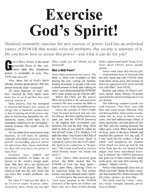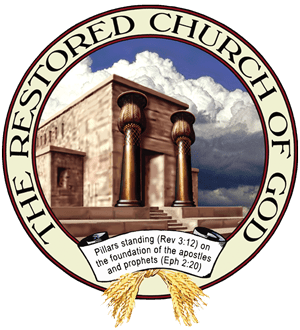This is a topic of much debate among many religionists and archaeologists. However, the account of Christ’s life, as found in the Bible—which is inspired revelation from God—serves as proof enough of His existence! However, there are other sources that contribute to the proof of His life and death.
A second-century theologian, Justin Martyr, wrote, “Now there is a village in the land of the Jews, 35 stadia from Jerusalem, in which Christ was born, as you can ascertain also from the registries of the taxing under Cyrenius your first procurator in Judea” (First Apology, chapter 34).
Martyr was referring to the records of Jesus’ birth in Judea that were still in existence in his day. But, since he was a theologian who would naturally support accounts of Christ’s existence, his account may seem invalid to the doubter.
What about historians against Christianity? What did their writings say?
One of such anti-Christian mentality was Cornelius Tacitus, a Roman historian, senator, consul and governor of the province of Asia. Concerning Jesus and His followers, Tacitus wrote, “Nero…punished with every refinement the notoriously depraved Christians (as they were popularly called). Their originator, Christ, had been executed in Tiberius’ reign by the governor of Judea, Pontius Pilate. But in spite of this temporary setback, the deadly superstition had broken out afresh, not only in Judea (where this mischief had started) but even in Rome” (The Annals of Imperial Rome, XV, 44).
Julian the Apostate (called such because he rejected Christianity after being raised in it), a fourth-century emperor, wrote, “Jesus, whom you celebrate, was one of Caesar’s subjects. If you dispute it, I will prove it by and by; but it may be as well done now. For yourselves allow, that he was enrolled with his father and mother in Cyrenius…But Jesus having persuaded a few among you, and those the worst of men, has now been celebrated about 300 years; having done nothing worthy of remembrance; unless anyone thinks it is a mighty matter to heal lame and blind people, and exorcise demoniacs in the villages of Bethsaida and Bethany” (Cyril Contra Julian, VI, 191, 213).
These are just two quotes from pagan Roman scholars who loathed Christianity. Since these men had access to government records, and hated what Christians believed and stood for, they could have easily “disproved” and discredited the existence of Christ if they so wished. But, because they could not do such a thing, their writings only add to the monumental proof of the life of Christ.
What about the Jewish people? If Christ did not exist, how then could the Jews reject Him?
In his book Antiquities of the Jews, Jewish historian Flavius Josephus writes about Jesus, His disciples and John the Baptist. He referred to John as “the good man” (XVIII, 5, 2). Modern-day scholars recognize Josephus’ account of the death of James, “the brother of Jesus who was called Christ” (XX, 9, 1), as genuine.
The Jewish Encyclopedia (1907 edition) explains that Jesus is also mentioned in the Talmud, the Jewish tradition consisting of the Mishnah and the Gemara. These references to Christ are found in the sections Shabbath 104b and 116b; Sanhedrin 43a, 67a and 107b; and Sotah 47a. You may want to read an article entitled “Jesus of Nazareth,” from The Jewish Encyclopedia (1907), the articles “Jesus Christ” and “Talmud and Midrash” from The New Encyclopedia Britannica (1981), or the article “Jesus” in the Encyclopedia Judaica for more background concerning this subject.
These sources offer valuable information regarding the many proofs of the life of Christ. They point to the immutable facts that He: was born of a virgin, was of Jewish nationality, preached the gospel, healed the sick and diseased, and was betrayed and brutally slaughtered.


















